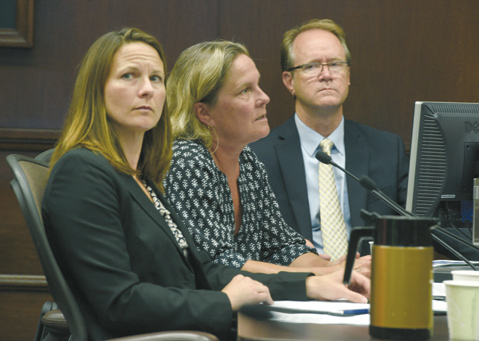Vacation-Rental Crackdown
City and County Tell Owners to Be Prepared

The takeaway from Tuesday night’s Santa Barbara City Council meeting was clear: Those who operate short-term vacation rentals in neighborhoods not designated for such business ventures ought to prepare for a beefed-up crackdown by municipal zoning-code enforcers. Even more clear was why councilmembers voted unanimously to bolster these enforcement efforts with an extra $180,000. It all came down to Santa Barbara as a world-class dart on the vacation map and an even better place to call home.
“Our history of very strict zoning has helped create this very desirable place,” Councilmember Dale Francisco said, as he explained adverse impacts to residential neighborhoods if the city continues allowing homeowners to add their houses to the burgeoning short-term rental market. Councilmember Randy Rowse added that when he bought his Mesa home, he did so with the expectation that the residential neighborhood would never legally tolerate, for example, a moped repair shop in his next-door neighbor’s garage. The city has places for businesses and places for family homes, he said.
The councilmembers’ motion also provided a transition period, until the end of next year, for existing vacation-rental providers who’ve played above the board — securing business licenses and paying transient occupancy taxes — but who, through no fault of their own, can’t legally operate in neighborhoods zoned residential. In fact, the city has issued permission and collected taxes — $1.2 million last fiscal year — at the same time its zoning code prohibited those short-term rentals. “We are not of clean hands,” said Councilmember Gregg Hart.
Zoning-code enforcers have been directed to first lower the boom on the city’s worst offenders — unlicensed tax dodgers — while the City Attorney’s Office has been tasked with subpoenaing dozens of online short-term rental middlemen — such as Airbnb and VRBO — for location and income data on Santa Barbara–based vacation-rental hosts. “The door is closing on vacation rentals,” Councilmember Frank Hotchkiss said.
Elsewhere along the South Coast, Carpinteria’s council tackled the issue Monday night. Traditionally, the beach town has prohibited short-term rentals in single-family residential areas but allowed them in multifamily and commercial zones. Currently, Carpinteria licenses 271, most concentrated along the beach and downtown. More than half have on-site management.
To clarify its stance, council directed staffers to draft an ordinance that reflects its existing position of allowing short-term rentals in multifamily zones but restricting them to beach and downtown areas. They’re also going to kick around the idea of putting a cap on the total number allowed. Homestay housing — where an on-site homeowner rents out vacation rooms — will not be affected.
Meanwhile, within Goleta city limits, residential short-term rentals are allowed to licensed homeowners who also provide a nuisance plan and a $1,500 surety bond.
The big question remaining is what will happen within unincorporated neighborhoods throughout Santa Barbara County. In Montecito, for example, “This has been an issue for a long time,” said Victoria Greene, executive director of the Montecito Association, adding that the association’s 17-member Board of Directors has differing opinions on the matter. A range of emotion also fills the association’s online citizen survey, where there are warnings about government oversight of private property and stories about once-tranquil streets drowned by late-night revelry and traffic overflow.
Another vacation-rental hotspot is the Santa Ynez Valley. In particular, Los Olivos has been hit hardest, according to Bob Field, former chair of the valley’s Planning Advisory Committee. “Los Olivos has already lost its downtown to wine tasting,” he said. “Their little Mayberry is gone. And now they’re losing their neighborhoods. We need to stop [short-term rentals] in residential neighborhoods.”
Field added that, as written, the county’s zoning ordinance is up for interpretation. On the one hand, it states homes in residential neighborhoods are intended for use by a single family on a non-transient basis. On the other, and more precisely, “short-term rentals are currently not defined in our code,” explained Jessica Metzger, an associate planner with the county. She added that in 2007, the county’s zoning administrator determined that “short-term rentals are allowed in legal dwellings.”
Field hopes the ongoing workshops hosted by the county will eventually produce an ordinance that’s not so ambiguous.
Greene expressed that the county needs to take a hard look at commercial uses of residential homes, but “we haven’t taken a position on what an ordinance should look like.”
It’s too early to tell how comprehensive the ordinance might be, Metzger said. But it’s reasonable to assume that houses that have historically been marketed as vacation rentals — such as those fronting Montecito’s Miramar Beach — won’t be targeted by the new law. Homestay housing will also be addressed.
A pair of short-term-rental workshops for the new county ordinance are scheduled for August 18 and 20, at the Santa Ynez Valley Marriott and Westmont College, respectively.



